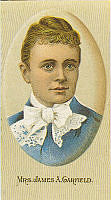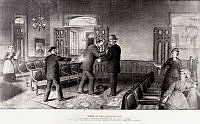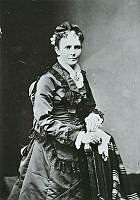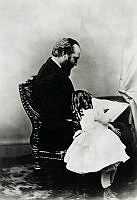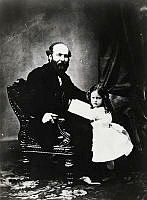The Attempted Assassination of the President - Scene in the President's Sleeping Room, White House Collection
This engraving depicts the scene in President James Garfield's bedroom at the White House as he struggles to recover from an assassin's bullet. Garfield was shot on July 2, 1881 inside a Washington, D.C. train station by Charles Guiteau, who had sought a position in the government and was rejected. The president succumbed to his wounds 11 weeks later. The engraving was based on sketches by Albert Berghaus and Charles Upham and first appeared in "Frank Leslie's Illustrated Newspaper."

